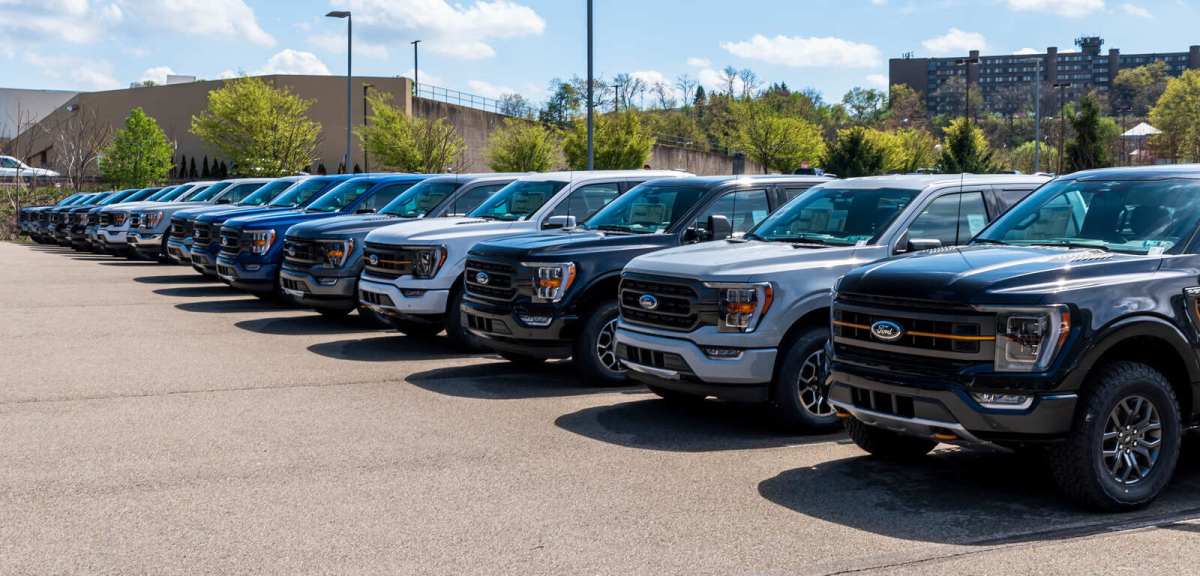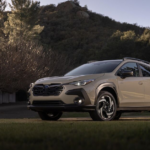Audio By Carbonatix
Thomas Sieber runs an automotive insights YouTube channel called @WheelsandWallets. While some followers admit his stuff is borderline “clickbaity,” I have an inkling he’s coming from a place of direct personal knowledge.
For starters, there’s a Thomas Sieber on LinkedIn who’s apparently currently working at a Chevrolet dealership in Broken Arrow, Oklahoma. And he looks a whole lot like the YouTuber. Second, his videos really do mirror a lot of what’s happening on lots across the country. He recently launched one “exposing” how hard dealers really work to turn their inventory within 90 days. If you’re even considering a brand-new car, this one’s worth watching.
Walk across any dealer lot in 2025 and you’ll likely spot a strange automotive time capsule: brand-new 2023 models still shrink-wrapped in plastic, sitting unloved two model years later. We’re talking $100,000 trucks and SUVs, for instance.
These “new old stock” cars are the unintended consequence of pandemic-era pricing strategies and stubborn inventory decisions. And according to dealership insider Thomas Sieber, they’re piling up everywhere, creating headaches for dealers and raising big questions for buyers.
Dealers accept allocations from automakers and finance their inventory through “floor planning.” It’s a type of loan that usually carries little to no interest for the first 90 days. The goal is simple: sell that vehicle quickly.
If it’s still there at 180 days, the clock starts ticking louder. Yet Sieber said he’s seen models languish on lots for 700 or even 800 days.
That’s a bonus dangled in front of sales staff. For example, an extra $1,000 if they can unload that dust-collecting 2023 model. The idea is to make sure every customer hears the pitch for that stale inventory.
But bonuses only go so far if the price is wrong. Sieber noted that many of these long-sitting cars are victims of the dealership’s own greed. At launch, they were saddled with steep market adjustments or pricey add-ons. Shoppers simply refused to bite. Now, after two years of sitting under the sun and rain, they’re finally seeing modest discounts…far too late.
One is repurposing the car as a demo vehicle for management. Most managers drive dealership cars as part of their compensation. That slow-selling unit makes an easy candidate.
Another option is to move it into the service department’s loaner fleet. Automakers will often pay dealers for putting new cars into service use. Those extra miles might soften the blow when they finally discount the car for sale.
But that doesn’t always work out for the best, either. A different salesman (also named Tom!) posted a TikTok in September lamenting what one customer did to their brand-new Ford Bronco Sport Heritage Edition:
This is a first for me and I’m sure many other people! #fyp #forddealership #viral #carbuyingtips #cardealership
In any case, even a discounted, lightly driven car isn’t a guaranteed win. Cars are designed to be driven, not parked, and sitting idle for years can invite mechanical issues. That’s a gamble both buyers and dealers have to consider.
Sieber explained that dealers hate doing this because they get significantly less money. Rival dealers know exactly how long that car has been collecting dust and will only buy well below market value.
Worse, the original dealer loses the chance to make money in the “finance box,” where they recover profits through financing, extended warranties, and other add-ons.
Today, it’s normal. High prices, weaker quality, and shifting buyer expectations have combined to create a backlog of unsold inventory. And as interest continues to accrue on those floor plans, every passing month makes those cars harder to sell and more expensive to keep.
The result is a lose-lose scenario for dealers and a cautionary tale for shoppers. What once seemed unthinkable (a “brand-new” car with a birthday older than your latest phone) is now parked on lots nationwide. And as Sieber warned, the longer they sit, the bigger the problem becomes.
MotorBiscuit reached out to Thomas Sieber via his TikTok account to confirm his personal experience with the topics he posts about.
Sarah Kennedy is the Editor-in-Chief of MotorBiscuit. She joined the team as Managing Editor in 2021 and has more than 20 years of automotive and operations expertise. She held ASE certifications as an Automotive Service Consultant and Parts Specialist and was a licensed car salesperson for many years. Sarah often focuses on helping drivers navigate used car buying and vehicle ownership. She created “Shop Smarts,” a column for MOTOR Magazine, and was a contributor there for eight years. Her work earned her a Gold Medalist award from the American Society of Business Publication Editors in 2014 and Bronze Medalist awards from the International Automotive Media Competition in 2014 and 2015. She attended the Automotive Management Institute and earned her bachelor’s degree from The Ohio State University.












